Related Research Articles
A massively multiplayer online role-playing game (MMORPG) is a video game that combines aspects of a role-playing video game and a massively multiplayer online game.
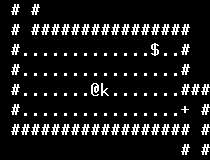
The Dungeons of Moria, usually referred to as simply Moria, is a computer game inspired by J. R. R. Tolkien's novel The Lord of the Rings. The objective of the game is to dive deep into the Mines of Moria and kill the Balrog. Moria, along with Hack (1984) and Larn (1986), is considered to be the first roguelike game, and the first to include a town level.
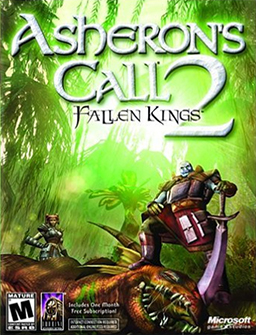
Asheron's Call 2: Fallen Kings was a fantasy massively multiplayer online role-playing game (MMORPG) for Microsoft Windows which was released on November 22, 2002 and shut down on December 30, 2005 before it was relaunched as a beta for active Asheron's Call subscribers in 2012. It is a sequel to 1999's Asheron's Call, although content, graphics and gameplay dynamics differed greatly from its predecessor.
In tabletop games and video games, a character class is an occupation, profession, or role assigned to a game character to highlight and differentiate their abilities and specializations.

Lineage is a medieval fantasy, massively multiplayer online role-playing game (MMORPG) released in Korea and the United States in 1998 by the South Korean computer game developer NCSoft, based on a Korean comic book series of the same name. It is the first game in the Lineage series. It is most popular in Korea and is available in Chinese, Japanese, and English. The game was designed by Jake Song, who had previously designed Nexus: The Kingdom of the Winds, another MMORPG.
Ragnarok Online is a massively multiplayer online role-playing game (MMORPG) created by Gravity based on the manhwa Ragnarok by Lee Myung-jin. It was released in South Korea on 31 August 2002 for Microsoft Windows. The game has spawned an animated series, Ragnarok the Animation, and a sequel game, Ragnarok Online 2: Legend of the Second. Player characters exist in a world with a player environment that gradually changes with the passage of time. Major changes in the features and history of the world take place as episodes in the RO timeline.
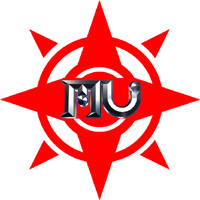
MU Online is an Isometric medieval fantasy MMORPG, produced by Webzen, a Korean gaming company. It was introduced in 2001, and is still being supported and updated in 2024.

Lineage II is a massively multiplayer online role-playing game (MMORPG) for Microsoft Windows and the second game in the Lineage series. It is a prequel to Lineage and is set 150 years before the first game. It has become popular since its October 1, 2003 launch in South Korea, reporting 1,000,918 unique users during the month of March 2007. To date, the game has been played by more than 14 million users, most of whom are based in Asia.

Aion: The Tower of Eternity is a massively multiplayer online role-playing game (MMORPG) developed and published by the South Korean company NCSoft. The game combines PvP and PvE in a fantasy game environment. As of May 2009, Aion had 3.5 million subscribers in Asia. AION's first major expansion pack was released to North America and Europe on September 7, 2010 under the name Aion: Assault on Balaurea. Truly Free launched on April 11, 2012 with no restrictions. The second major expansion was released in North America on June 26, 2013 under the name Aion: Dark Betrayal. Its most recent expansion was launched on July 13, 2016 under the name Aion: Echoes of Eternity.
The history of massively multiplayer online games spans over thirty years and hundreds of massively multiplayer online games (MMOG) titles. The origin and influence on MMO games stems from MUDs, Dungeons & Dragons (D&D) and earlier social games.

Secret of the Solstice is a free-to-play MMORPG developed and published by DNC Entertainment in Korea and hosted by Outspark in the international English market. It is the second MMO published by Outspark.

Atlantica Online is a free-to-play (F2P) 3D tactical massively multiplayer online role-playing game (MMORPG) developed by NDOORS Corporation. The game is currently published by Valofe. The game's primary setting is a fantasy-themed alternate history Earth composed of a diverse blend of historical, cultural, allegorical, and mythological elements. The game world is primarily modeled after real-world geography with accessible locations on six of the seven continents as well as the mythical floating continent of Atlantis from which the game's name is derived.
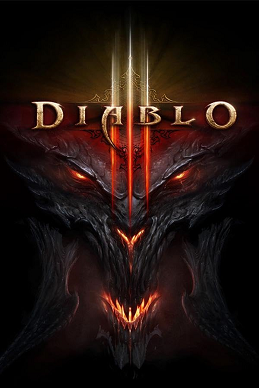
Diablo III is a 2012 hack-and-slash action role-playing game developed and published by Blizzard Entertainment as the third installment in the Diablo franchise. It was released for Microsoft Windows and OS X in May 2012, PlayStation 3 and Xbox 360 in September 2013, PlayStation 4 and Xbox One in August 2014, and Nintendo Switch in November 2018. Set 20 years after the events of Diablo II, players control one of seven character classes – Barbarian, Crusader, Demon Hunter, Monk, Necromancer, Witch Doctor, or Wizard – and are tasked with defeating Diablo.

Darkfall was a massively multiplayer online role-playing game (MMORPG) developed by Aventurine SA that combined real-time action and strategy in a fantasy setting. The game featured unrestricted PvP, full looting, a large, dynamic game world, and a player-skill dependent combat system free of the class and level systems that typify most MMORPGs. Darkfall had a 3D world environment and contained mild violence. The official Darkfall servers were closed on 15 November 2012.

Vindictus is a free-to-play massively multiplayer online role-playing game (MMORPG) created by devCAT, an internal studio of Nexon. The story follows the player character joining a group of mercenaries and going on a series of missions to battle monsters. The gameplay has players exploring dungeons, fighting monsters, and upgrading their characters.

TERA, also known as TERA Online, is a massively multiplayer online role-playing game (MMORPG) developed by Bluehole Studio, a subsidiary of Krafton. The game was released in South Korea on 25 January 2011, in North America on 1 May 2012, and in Europe on 3 May 2012, with closed and open beta tests taking place before the launch dates. Nexon, Krafton, and Gameforge published the game in these regions, respectively. En Masse Entertainment was the North American publisher, until September 2020, while Atari handled physical distribution. In February 2013 the game was renamed to TERA: Rising concurrently with the game's launch to the free-to-play model.

Path of Exile is a free-to-play action role-playing video game developed and published by Grinding Gear Games. Following an open beta phase, the game was released for Microsoft Windows in October 2013. A version for Xbox One was released in August 2017, and a PlayStation 4 version was released in March 2019.
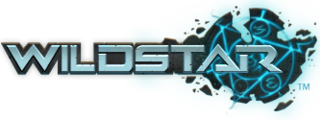
WildStar was a massively multiplayer online role-playing game that was developed by Carbine Studios, published by NCSoft. It was unveiled on August 17, 2011, during Gamescom. WildStar was set in a fantasy/science fiction world on the fictional planet Nexus, where a mysterious and powerful race known as the Eldan have disappeared, leaving behind a wealth of technology and secrets for players to explore.

Master X Master (MXM) was a multiplayer online battle arena (MOBA) video game developed and published by NCsoft.

Revelation Online is a free-to-play massively multiplayer online role-playing game (MMORPG) developed by NetEase, under the title Revelation in China and Revelation Online in the rest of the world. It is published by My.com in Europe and North America, and received an open release worldwide on March 6, 2017. The game features classic MMORPG gameplay and is set in a world inspired by the books of the Chinese fantasy author Jiang Nan. Revelation Online receives regular update content updates, with the latest, Heaven and Earth, due for release in 2019.Finished on March 12, 2024. Its in-flight combat system and its numerous customization options effectively in gameplay are missed, having no equivalent, only pseudo alter egos like Aion: The Tower of Eternity. There were 3 months of prevention and free content before closure, surpassing the necessary duration to completely finish the game. This leaves little possibility for its re-release or for the tolerance of private servers.
References
- Notes
- ↑ Trade Wars: Dark Millennium Q&A – PC News at GameSpot
- ↑ Dungeon Runners – Membership Archived August 24, 2007, at the Wayback Machine
- ↑ "MMOFury Honors 'The Heave'". MMOFury. March 7, 2008. Archived from the original on November 25, 2010. Retrieved 2008-08-05.
- ↑ "Dungeon Runners – Quickstart Guide". NCsoft. Archived from the original on 2008-06-20. Retrieved 12 April 2010.
Each character class starts with four skills, two Offensive Skills and two Passive Skills
- ↑ ArsGeek –Blog Archive –Cavtroop reviews 'Dungeon Runners'
- ↑ Dungeon Runners Review // PC /// Eurogamer
- Bibliography